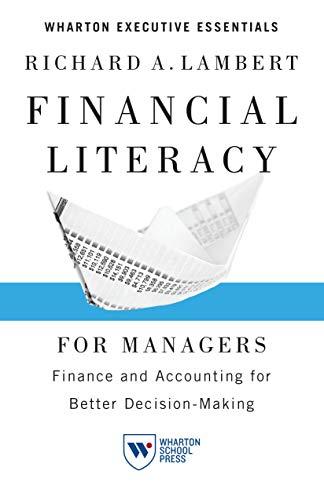Question
Part 1 - Your boss is back with a two partial models. The first partial model you boss needs you to look at is for
Part 1 -
Your boss is back with a two partial models. The first partial model you boss needs you to look at is for the stock of Gao Computing sells for $50, and last years dividend was $2.10. A flotation cost of 10% would be required to issue new common stock. Gaos preferred stock pays a dividend of $3.30 per share, and new preferred stock could be sold at a price to net the company $30 per share. Security analysts are projecting that the common dividend will grow at a rate of 7% a year. The firm can issue additional long-term debt at an interest rate (or a before-tax cost) of 10%, and its marginal tax rate is 35%. The market risk premium is 6%, the risk-free rate is 6.5%, and Gaos beta is 0.83. In its cost-of-capital calculations, Gao uses a target capital structure with 45% debt, 5% preferred stock, and 50% common equity.
Calculate the cost of each capital componentin other words, the after-tax cost of debt, the cost of preferred stock (including flotation costs), and the cost of equity (ignoring flotation costs). Use both the CAPM method and the dividend growth approach to find the cost of equity.
Calculate the cost of new stock using the dividend growth approach.
What is the cost of new common stock based on the CAPM? (Hint: Find the difference between re and rs as determined by the dividend growth approach and then add that difference to the CAPM value for rs.)
Assuming that Gao will not issue new equity and will continue to use the same target capital structure, what is the companys WACC? e. SupposeGao is evaluating three projects with the following characteristics.
Each project has a cost of $1 million. They will all be financed using the target mix of long-term debt, preferred stock, and common equity. The cost of the common equity for each project should be based on the beta estimated for the project. All equity will come from reinvested earnings.
Equity invested in Project A would have a beta of 0.5 and an expected return of 9.0%.
Equity invested in Project B would have a beta of 1.0 and an expected return of 10.0%.
Equity invested in Project C would have a beta of 2.0 and an expected return of 11.0%.
Analyze the companys situation, and explain why each project should be accepted or rejected




2 INPUTS USED IN THE MODEL 4 PO 5 Net Ppf 6 Dpf 7 DO 8 9 B-T rd 10 Skye's beta 11 Market risk premium, RPM 12 Risk free rate, rRF 13 m debt 14 Target capital structure from preferred stock 15 Target capital structure from common stock 16 Tax rate $50.00 $30.00 $3.30 $2.10 7% 10% 0.83 6.0% 65% 45% 5% 50% 35% 10% 9 Target capital structure fro Flotation cost for common 18
Step by Step Solution
There are 3 Steps involved in it
Step: 1

Get Instant Access to Expert-Tailored Solutions
See step-by-step solutions with expert insights and AI powered tools for academic success
Step: 2

Step: 3

Ace Your Homework with AI
Get the answers you need in no time with our AI-driven, step-by-step assistance
Get Started


